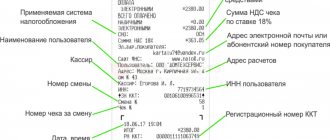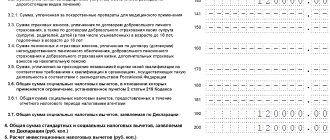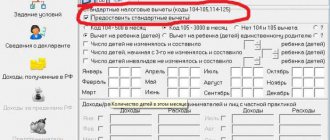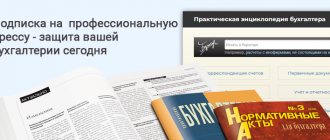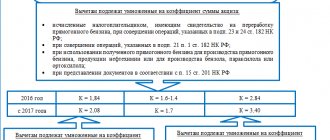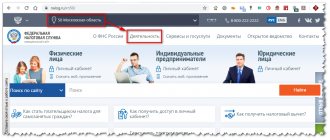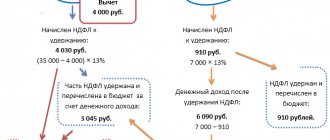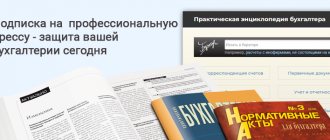What does ASK VAT-3 give to tax authorities?
ASK VAT-3 allows tax specialists to fully automate the process of monitoring the movement of funds between the accounts of legal entities and individuals and increase its productivity from 10 to 100%.
The intelligent search algorithm makes it possible to automatically build chains of money movement between legal entities and individuals and see, among other things, whether VAT has been paid in these chains.
In practice, this means that it will be much easier to find related companies and related individuals. Having detected a break in the chain, the program sends a signal, which must be further checked by tax officials.
Tax authorities now have a new division on their staff, numbering about 6 thousand analysts.
VAT under control
One of the most famous among taxpayers and the most convenient for inspectors is the “VAT Control” subsystem (another name is ASK VAT-2). If there are breaks in the VAT payment chains, the subsystem automatically generates a requirement to eliminate them. The program simultaneously highlights a potentially problematic company on the computer of an employee of the control and analytical department. Its task is to identify and stop the VAT evasion scheme and “encourage” the taxpayer to voluntarily clarify tax obligations.
“VAT Control” automatically administers 15 billion transactions per year for VAT and income tax (after all, when adjusting VAT obligations, taxpayers automatically change data on revenue and expenses).
Tax authorities use the subsystem when conducting tax audits for VAT. It allows you to build a “connection tree” - a chain of acceptance for VAT deduction, upon analysis of which the inspector immediately sees the so-called RMS (degree of risk management). Its system automatically assigns it to the taxpayer using a unique algorithm. The inspector displays the amounts of VAT calculated and accepted for deduction, and the size of tax gaps formed along the chain of counterparties.
Why is ASK VAT-3 dangerous?
In 2022, the complex will be implemented in all regions of the country and will receive qualitatively new capabilities.
ATTENTION! The ASK VAT-3 software package automatically generates a report, which, starting from November 2022, is a sufficient basis for initiating a criminal case if the amount of violations exceeds the amount established by law.
That is, if previously, in order to initiate a criminal case, the Investigative Committee of Russia had to conduct a pre-investigation check, request counter documents from the counterparty, compare data and draw conclusions, now this is not required, the inspector of the Federal Tax Service only needs to press one button.
If a software-analytical complex decides that a company has evaded paying taxes using any scheme (be it splitting up a company, creating fly-by-night companies or a chain of intermediaries), then a printout in the hands of an inspector today is already sufficient grounds for initiating a criminal case.
Latest, blog
02.06.2018
The ASK VAT system is a service for automating tax control over the movement of funds in the current accounts of commercial companies, and this year it is planned to implement it not in certain sectors of the Russian economy, but everywhere. With its help, the Federal Tax Service of the Russian Federation plans to virtually take 100% control over any gray and black schemes for tax evasion and reduction of the tax burden.
The system uses intelligent search algorithms, automatically building sequential chains of cash flows between market participants and monitoring the payment of VAT during transactions. At the same time, tax specialists are learning to search for and identify interdependent counterparties in order to take control of their economic activities and financial schemes.
What is the danger of the total introduction of ASK VAT-3 into the economy, which was announced in 2018?
The system will be implemented in all constituent entities of the Russian Federation and all areas of the economy, and will automatically generate reports on the economic activities of companies, on the basis of which the Federal Tax Service will be able to initiate criminal cases for tax violations. There is no need for preliminary pre-investigation checks by the RF IC based on claims raised by the Federal Tax Service - tax authorities will be able to initiate a case automatically.
In this case, the software package must independently decide:
whether the company is using an illegal tax evasion scheme;
Is this really tax evasion?
whether it is really conscious and subject to punishment.
There is a risk that not only scammers, shell companies and chains of intermediaries, but also completely legal companies that are being transformed, downsized, or merged due to production needs may fall under criminal sanctions and prosecution of fiscal officials.
Another problem with using the ASK VAT-3 system is extraterritorial inspections, during which business inspections will no longer be carried out by “their own” tax authorities, but by visiting ones from other regions. In such a situation, it becomes difficult to resolve a controversial issue with representatives of the Federal Tax Service "peacefully", which reduces extra-legal risks, but creates a lot of problems for the entrepreneurs themselves.
Problems will also arise for businessmen participating in tenders - the tenders and competitions themselves will now be monitored by industry associations of market participants. In this situation, both industry companies subject to inspections and customers of their services are under attack, since the Federal Tax Service will now consider them as objects potentially ready to participate in tax evasion schemes. That is, all business contacts of the inspected companies, and their contacts too, now come under control.
Potentially, the task is to bring all market participants out of the shadows and work legally with transparent payment of taxes. In reality, this could lead to the closure of many companies that are unable to cope with the high tax burden. And those entrepreneurs who remain in the market may find themselves under severe pressure, tying their hands.
In the current situation of tax pressure, businessmen and their partners will definitely need professional legal support and investment protection. Experienced tax dispute lawyers are ready to help their clients in resolving controversial issues of any complexity with fiscal government services. We will provide competent advice, help prepare the necessary claim and procedural documents, take part in pre-trial proceedings and defend your business and rights in courts of any level.
What are extraterritorial checks
In addition, tax officials have a new tool - extraterritorial inspections, thanks to which it will no longer be possible to come to an “amiable” agreement with your tax inspector, since Federal Tax Service employees from another district tax office, and possibly even from another city, will check the data provided by the company. which significantly reduces the possibility of extra-legal reduction of tax risks.
From 2022, the Federal Tax Service plans to pay special attention to monitoring tenders. This is supposed to be done with the help of industry associations of market participants.
Tax control is fully automated
AIS Tax-3 was put into operation in 2015. New services are regularly loaded into the system, which monitor the activities of all categories of taxpayers. The number of inspections for 2022 decreased by 30 percent, and revenues to the consolidated budget increased by 23 percent. This is digital evidence of how much more effective the work of inspectors has become during the modernization of the AIS Tax-3 software package.
Almost all control is automated. Inspectors receive up-to-date information about taxpayers in real time. Many illegal tax schemes are now detected by computers.
Components of applied infrastructure" (KPI) AIS "Nalog-3" Main blocks:
Main blocks:
- “Business Process Execution Infrastructure” (BIBP) is a block for modeling and executing business processes, decomposed into technological processes in the paradigm of a tax machine and user tasks.
- Communication block is a set of components for organizing communications between application and system components of the system.
- Block of logical hosts - allows you to organize and organize the execution of business logic by subsystems, creating a separate execution environment on the servers for each of them.
- Event exchange block - allows subsystems, working in isolated environments, to exchange business events.
- Data access block - allows you to organize application servers’ access to storage (DBMS, file storage) in an orderly manner, manages resources and access quotas.
- Centralized configuration block - allows you to flexibly manage the configuration of the entire system at one point, including managing access services for application and system-wide functions to a single centralized DBMS.
Main services:
- CSUD is a centralized access control system.
- Authorization service – serves for interaction of business logic with the data management system.
- Instrumentation service - allows you to record the technological progress of the process and identify abnormal situations and bottlenecks.
- Exception handling service - allows you to maintain system functionality when emergency situations occur.
- Printing forms service - mass creation of printed forms according to specified templates.
- Unified Client Application (UCA) is a framework for creating integrated applications for users. Using a flexible authorization system, the CSUD EKP configures the composition of available functions, menu blocks, screen forms, user tasks, request templates for a specific user in the context of assigned roles.
System-Wide Components
- Navigator - organization of parameterized user access to data.
- User Job Log - A log for user access to jobs generated by the system or other users.
- Real Time Monitor is a mechanism for logging and viewing comments and errors during system operation.
Back in 2007, Microsoft (application servers and client sites) were chosen as the base platforms for creating the system; in 2010, Oracle Exadata (transactional segment DBMS) and Teradata (analytical segment DBMS). At that time, they were recognized leaders in their segments, which means they guaranteed the stability of the system.
When selecting platforms, they underwent in-depth testing, which included creating an architectural prototype with basic tax administration functions and conducting load tests on a data set comparable to industrial volumes. In addition, the factor of maximum preservation of investments was taken into account: more than 90% of the specialized software of the Federal Tax Service of Russia was created on Microsoft and Oracle platforms, and vast experience was accumulated in terms of not only development, but also management of them.
When designing the AIS “Tax-3”, a set of system-wide components was identified that simplify and standardize the use of the process approach when automating tax administration. This set was called “Application Infrastructure Components” (ACI) and became the basis of the system, allowing the implementation of business processes of any complexity by distributed teams of programmers. The KPI is an in-house development of the Federal Tax Service of Russia.
The KPI layer is developed in the GRID architecture, which allows you to divide application servers into groups of application functions and roles (interactive or automatic work servers). The use of the architectural capabilities inherent in the KPI/EKP allows for horizontal scaling of the system by adding new computing resources.
There are several scaling options available. The first is at the level of application servers by separating functionality into isolated server groups, expanding these groups with additional servers, and setting up parameters for processing operations within them. Currently, more than 20 such groups have been identified within the framework of the AIS “Tax-3”.
The second is by segmenting the load on the DBMS through connection services. The connection service is used by a corresponding set of application and system-wide functions. As part of the connection service, Oracle Exadata nodes are specified, on which application functions can be executed. This allows you to isolate the load across computing nodes, segmenting it and reducing inter-cluster interaction.
Individuals Administration Program
The full-scale introduction of this software package into AIS Tax-3 allowed the Federal Tax Service to make the administration of property taxes for individuals more comfortable. For example, an application for a benefit can be submitted to any tax authority. Citizens who do not live at the registration address do not need to travel many kilometers to submit documents.
Tax officials at the place of registration of an individual have complete information about all objects of taxation (apartments, residential buildings, dachas, garages, land plots, vehicles, etc.).
The subsystem is dangerous only for unscrupulous taxpayers. Tax officers see information in dynamics, information is constantly updated.
The program allows you to generate a general notification for the payment of taxes, even if the objects are located on the territory of other inspectorates.
